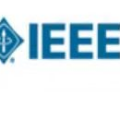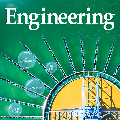【计算机类】SCI期刊约稿信息10条
软件工程
Computer Languages, Systems and Structures
Special Issue on Static Analysis of Android Apps: Security and Privacy
全文截稿: 2017-10-30
影响因子: 1.615
期刊难度: ★★★
CCF分类: C类
网址: http://www.journals.elsevier.com/computer-languages-systems-and-structures
When installing an app on an Android device, we grant it access to parts of our personal (and often sensitive) data that are either stored on the device or dynamically acquired by the environment (e.g., GPS coordinates). How can we detect whether such information is leaked by the app to (unauthorized) external parties? How can we guarantee the absence of security threats when downloading an app from the store?
The aim of this special issue is to provide a broad picture of how static analysis techniques address the abovementioned issues: tracing how information is potentially released; how problematic such releases are (as a function of the declassification, or anonymization, applied to the data); whether and how side channels (implicit dependencies) are a threat; and how to prevent undesirable interactions due to multiple applications running on the same device or on connected devices.
Topics of interest include, but are not limited to:
- Specification of SAAPs
- Abstract Interpretation as SAAP
- Control Flow Analysis as SAAP
- Model Checking as SAAP
- Taint Analysis & Dataflow Analysis as SAAP
- Validation and Verification of SAAPs
- Tools for model-driven SAAP development
- Case Studies of SAAPs
计算机综合与前沿
IEEE Journal of Biomedical and Health Informatics
Health Engineering and Informatics Driven by the Industry4.0 for Aging Society
全文截稿: 2017-10-31
影响因子: 3.451
期刊难度: ★★★
CCF分类: C类
网址: http://jbhi.embs.org/
As a traditional research topic of biomedical engineering and health informatics, the aging of population has been globally recognized as one of the top grand challenges. The age-related diseases such as neurodegenerative diseases, cardiovascular and cerebrovascular diseases, and psychological diseases have become the primary killers of human. From economic point-of-view, these diseases have consumed the major portion of healthcare resources due to the long course of disease and large patient base. Pulled by this grand social challenge, automation technologies are dramatically “spilling out” from the traditional scenarios such as factories and workshops to biomedicine and healthcare. Especially in the context of the fourth revolution of industry (Industry4.0), cross disciplinary synergy of expertise and deep convergence of the automation technologies, biomedical engineering, and health informatics are reshaping the research landscape in academia and industry towards the rapid development of Health Engineering, an emerging interdisciplinary field for the predictive, preventive, precise and personalized medicine. This has offered an unpresented opportunity for solving the challenges caused by the aging of population.
The goal of this special issue is to publish the latest research advancement in the convergence of automation technology, biomedical engineering and health informatics. The application scenarios can cover single or multiple scenarios of health engineering such as primary care, preventive care, predictive technologies, hospitalization, home care, and occupational health. We focus on the cross disciplinary approaches, solutions, and initiatives rather than single disciplinary ones. Only unpublished original articles will be accepted.
Topics include but are not limited to:
- Theories, models and tools for optimizing and operating elderly care facilities, services and processes
- Caring robots and assistive equipment for elderlies
- Advanced sensing components, networks, and systems for age related diseases
- Flexible, wearable, and implantable biosensors for prognosis, diagnosis, treatment, and medication
- Long term and unobtrusive monitoring for elderlies
- Preventive medicine powered by data analytics, unobtrusive monitoring and Artificial Intelligence
- Age friendly living spaces and working spaces with integrated biomedical devices and systems
- Cyber-Physical-Systems approach in pharmaceutical management and healthcare logistics for elderlies
- Deterministic communications and controls in remote medicine for elderlies
- System Engineering-based methodologies and practices in Health Engineering
数据库管理与信息检索
Data Mining and Knowledge Discovery
Special Issue on Data Mining for Geosciences
全文截稿: 2017-11-01
影响因子: 3.16
期刊难度: ★★★★
CCF分类: B类
网址: http://www.springer.com/journal/10618/about
Modern geosciences have to deal with large quantities and a wide variety of data, including 2-D, 3-D and 4-D seismic surveys, well logs generated by sensors, detailed lithological records, satellite images and meteorological records. These data serve important industries, such as the exploration of mineral deposits and the production of energy (Oil and Gas, Geothermal, Wind, Hydroelectric), are important in the study of the earth crust to reduce the impact of earthquakes, in land use planning, and have a fundamental role in sustainability. In particular, the process of exploring and exploiting Oil and Gas (O&G) generates a lot of data that can bring more efficiency to the industry. The opportunities for using data mining techniques in the "digital oil-field" remain largely unexplored or uncharted. The purpose of this special issue is to be a breaking-edge showcase for applications and developments of data mining and knowledge discovery in the area of the geosciences with a special focus in the oil and gas exploration.
Researchers are invited to submit original papers presenting novel data mining methodologies or applications to the geosciences, including but not limited to the following topics:
- Oil and gas exploration and production
- Mineral deposit/reservoir identification and characterization
- Exploration of well-log data
- Earth crust analysis and understanding
- Sensor data exploration
- Remote sensing
- Novel data mining problems in the geosciences
- Visualization of big data in the geosciences
- Geoscience data fusion for enhancing data mining solutions
- Data streams analysis in geoscience
- Feature extraction and data transformation from geoscientific data
计算机综合与前沿
IEEE Journal of Biomedical and Health Informatics
Integrating Informatics and Technology for Precision Medicine
全文截稿: 2017-11-02
影响因子: 3.451
期刊难度: ★★★
CCF分类: C类
网址: http://jbhi.embs.org/
In the majority of medical conditions common therapeutic approaches are usually effective in only a small percentage of the patient population. Recent scientific discoveries implicate as possible causes of this lack of effect the multifactorial nature of most diseases and the patient variability in disease expression, genetic disposition, and environmental exposures. It has become apparent that in order to improve the response to therapy and long term prognosis, treatment must be specifically tailored to the disease and the patient. Precision medicine is an attempt to maximize effectiveness by taking into account individual variability in clinical presentation, medical history, genes, environment, and lifestyle. It is a leap beyond the promise of “personalization” empowered by recent technological advances. However, progress in precision medicine has been slow due to the lack of “precision” in the traditional research, translation, and clinical practice. Current approaches are largely empirical, fragmented, lack integration, and rely on population statistics, with inadequate feedback between disciplines. In addition, most of the information required for personalization is either missing or unutilized. New technological developments can help overcome these hurdles of imprecision to achieve the full promise of precision medicine.
The purpose of this special issue is to report the latest advances in the field of integrated precision medicine technologies to further enable, drive and accelerate the development, translation, and application of precision medicine. Topics for this special issue include, but are not limited to:
1.Bioinformatics
2.Imaging Informatics
3.Sensor Informatics
4.Medical Informatics and Public Health Informatics.
数据库管理与信息检索
Journal of Web Semantics
Special Issue on Ontology Engineering
全文截稿: 2017-11-13
影响因子: 1.075
期刊难度: ★★★★
CCF分类: B类
网址: http://www.journals.elsevier.com/journal-of-web-semantics
The Journal of Web Semanticsinvites submissions for a special issue on Ontology Engineering to be edited by Valentina Tamma, Matthew Horridge, and Bijan Parsia. Submissions are due by 13 November, 2017
The Web Ontology Language (OWL) became a World Wide Web Consortium standard in 2004. It has since been used in many diverse domains from geography to medicine where many people, groups, and consortia build, maintain and regularly publish high-quality, production-level ontologies. In this time ontology engineering has evolved considerably with the development of new methodologies, techniques, tools, and processes for ontology creation and maintenance. The actual process of creating ontologies has begun to shift from being a small scale, completely manual process to a combination of manual, semi-automated, and programmatic techniques and from single-person or small-group efforts to large-scale collaborative efforts. Concurrently, ontology engineering research, often drawing inspiration from the increasing empirical rigor of the software engineering community, has grown more sophisticated.
The goal for this special issue is to provide a venue to showcase the breadth and depth of ontology engineering and ontology engineering research. We are particularly interested in empirical papers which aim to explore or demonstrate the benefits of ontologies to larger efforts or of some technique or tooling on the development of ontologies. We encourage principled methodological diversity and welcome papers with significant methodological interest even if the results are null or negative. In addition to standard research papers, we welcome submission of short case studies or system/ontology/method/application descriptions, though we would encourage more general reviews where possible, reserving short papers for cases with some special focus, novelty, or clear interest. We recommend consulting with the Guest Editors before submission of such papers.
We are happy to receive pre-submission of an experimental plan especially if the risk of null results is high and will provide feedback.
Topics of interest include (but are not limited to):
- Ontology Engineering Research Methodology
- Ontology Engineering Methodologies
- Ontology Learning (from text, data, or other sources)
- Ontology Visualisation
- Quality Assurance
- Ontology Debugging
- Collaborative Ontology Engineering practices
- Ontology Engineering workflows
- Document based ontology engineering
- Continuous Integration for Ontology Engineering
- Ontology Testing
- Explanation of Entailments in Ontologies
- Ontology Comprehension
- Ontology Design Patterns
- Ontology Versioning, Change, and Evolution
- Ontology Engineering Case Studies
- Agile Practices in Ontology Engineering
- User Studies on Ontology Engineering
- Ontology Modularisation
- Programmatic Approaches to Ontology Engineering
- Problems and Challenges of Reusing Ontologies
- Ontology Publishing Strategies
- Application of Software Engineering Techniques to Ontology Engineering
- Metrics for Ontology Engineering
计算机体系结构,并行与分布式计算
ACM Transactions on Reconfigurable Technology and Systems
Special Section on Deep Learning on FPGAs
全文截稿: 2017-11-15
影响因子: 1.409
期刊难度: ★★★★
CCF分类: B类
网址: http://trets.acm.org/
The rapid advance of Deep Learning (DL), especially via Deep Neural Networks (DNNs), has been shown to compete with and even exceed human capabilities in tasks such as image recognition, playing complex games, and large-scale information retrieval such as web search. However, due to the high computational and power demands of deep neural networks, hardware accelerators are essential to ensure that the computation speed meets the application requirements.
FPGAs have demonstrated great strength in accelerating deep learning inference with high energy efficiency. In this special section of TRETS, we call for the most advanced research results in the architecture of machine learning accelerators for both training and inference, as well as practical solutions related to DL tasks and its implementation on FPGAs. Topics of interest include (but are not limited to) the following:
a) Software/Compilers/Tools for targeting DL on FPGAs
b) New design methodologies for improving the programmability of DL on FPGAs
c) Microarchitectures and Implementations of DL applications on FPGAs
d) FPGA Implementations specifically targeting RNNs, such as LSTM, GRU, and MLPs
e) Analysis of combining multiple DL techniques on the same task
f) Cloud deployments for DL on FPGAs
g) DL FPGA implementations targeting constrained environments such as edge computing and IoT
h) Modeling, optimizations, and retraining DNNs at reduced precision
i) Secure DL applications on FPGAs Neuromorphic computing for DL on FPGAs
j) Comparison studies of FPGAs with other DL acceleration architectures (GPUs, TPUs, ASICs, etc)
计算机综合与前沿
IEEE Journal of Biomedical and Health Informatics
Small Things and Big Data: Controversies and Challenges in Digital Healthcare
全文截稿: 2017-11-30
影响因子: 3.451
期刊难度: ★★★
CCF分类: C类
网址: http://jbhi.embs.org/
Recent advances in information and communication technologies (ICT) have acted as catalysts for significant developments in the sector of health care, affecting strongly medical diagnosis, patient and healthcare management, treatment and health education. Small wearable, disposable sensors or medical devices as well as elementary services are featured as keys for monitoring health and facilitating well-being. The Internet of “small” Things (IoT) is at its infancy, and it will slowly but surely play a pivotal role in the monitoring of health, in early diagnosis/prognosis, in prompt design of interventions, and their precise personalisation. IoT is incrementally feeding a pool of Big Data and additional research is needed on knowledge discovery, data representation and innovative algorithms to extract meaningful information to foster the personalisation of Digital Medical Systems. As lots of new Big Data from various sources become available on top of existing biomedical data sets there is a need for harmonizing the datasets to gain more especially when aligned with (disparate) IoT data. Moreover, acceptability of such advancements in biomedical and health informatics is only feasible by training the experts and increasing awareness in public through cost effective solutions with the role of Massive Online Education, although it remains questionable how a personalised approach to fulfil individuals’ knowledge gaps can be met. The proposed special issue aims at attracting contributions on the aforementioned research areas and technologies, focusing on how they can be applied to personalising Digital Medical Systems.
The goal of this special issue is to publish the latest research advances on the research and application of Internet of small Things; knowledge discovery and knowledge representation for the analysis of Big Data and the role of Massive Open Education on acceptance towards personalizing Digital Medical Systems. Only articles from contributors to the recent 30th IEEE International Symposium on Computer Based Medical Systems (IEEE-CBMS2017) will be considered.
Topics include but are not limited to:
- Data Analysis and Knowledge Discovery
- Knowledge Representation
- Decision Support and Recommendation Systems
- Big Data and Everywhere Data Management
- Systems Integration and Security for Internet of small Things
- Biomedical Signal and Image Processing and Machine Vision as part of Internet of small Things
- Multimodal Biomedical Big Data Harmonization
- Personal Learning Networks for Health
- Digital literacy for biomedical engineers, health Informaticians and service users
- Robotics, Intelligent Medical Devices and Smart Technologies enabled by IoT and Big Data
图形学与多媒体
Multimedia Tools and Applications
Special Issue on Next Applications in Multimedia Computing
全文截稿: 2017-11-30
影响因子: 1.53
期刊难度: ★★★
CCF分类: C类
网址: http://www.springer.com/journal/11042/about
We are surrounded by a vast amount of multimedia contents, which are generated by various sources, from both professionals and amateurs, and many people consume multimedia content everyday. Despite the vast amount of documents describing all types of multimedia technologies, it is about time to have a new prospective to foresee how new techniques from various areas interact with multimedia techniques or applications. For example, mobile cloud computing is a new research topic. It is nature to ask what kind of multimedia applications such a technique could apply and what potential difficulties are to be solved. As a second example, traditional virtual reality glasses are expensive, and now we have a cheap alternative (Google cardboard VR kit) with the aid of a smartphone. To this end, we may wander if we can produce immersive audio by using a smartphone. As a third example, convolutional neural network is shown to outperform traditional methods in image recognition problems. If such a technique is applied to retrieval and indexing of general multimedia contents, can better performance be achieved? We need more evidences to answer these questions.
Furthermore, if multimedia content is to be consumed in a living room, the current trend is to have ultra high picture resolution (4 K and above) rendered with spatially layered audio (such as 22.2 channels arranged as top, middle, and bottom layers). To successfully deploy this type of multimedia content, we need new production machines, compression techniques, transmission media and methods, and new rendering devices and layout studies. Certainly, motion pictures with ultra high resolution can have many more applications yet to be studied.
This special issue is soliciting high quality technical papers addressing research achievements, practices and challenges for emergent multimedia techniques. Original and research articles are solicited in all aspects of including theoretical studies, practical applications, new social technology and experimental prototypes.
This special issue calls for original papers describing the latest developments, trends, and solutions of the promotion of multimedia techniques. Topics of interests include, but are not limited to:
- Immersive audio
- Multimedia indexing and retrieval
- Augmented/Virtual reality
- New image/audio/video compression techniques
- Data mining, analysis and re-production for multimedia computing
- New methods on privacy and security in multimedia
- New techniques on information communication and networking in multimedia
- Embedded system for multimedia applications
- UI/UX for multimedia contents
- Tools for multimedia content generations
- Verification and testing for multimedia software
计算机体系结构,并行与分布式计算
Computers & Electrical Engineering
Special Issue on Emerging Technologies for Connected Vehicles and ITS Networks
全文截稿: 2017-12-01
影响因子: 1.57
期刊难度: ★★
CCF分类: 无
网址: http://www.journals.elsevier.com/computers-and-electrical-engineering/
Over the past decade advances in vehicular communications, also referred as Connected Vehicles and intelligent transportation systems (ITS), have intended to trim down the fuel expenditure by avoiding congested traffic and enhancement of traffic safety, while initiating a new application perspective, i.e., mobile infotainment. To address the individual requirements of both safety and non-safety applications in the Connected Vehicles, there is a need to build a new communication technology for the integrated solutions of vehicular communications and ITS. Connected Vehicles can be of various types, such as Vehicle-to-Vehicle (V2V), Vehicle-to-Infrastructure (V2I), and Vehicle-to-Everything (V2E).
Due to the rapid growth in Connected Vehicles, many research issues need to be addressed, e.g., reliability and latency, appropriate scalable design of MAC and routing protocols, performance and adaptability to the changes in environment (node density and oscillation in network topology), and evaluation/validation of Connected Vehicles’ protocols under the umbrella of coherent assumptions using simulation methodologies. This special issue aims to emphasize the latest achievements to identify those aspects of Connected Vehicles and ITS networks that are identical to a traditional communication network in the broader spectrum.
Papers that exploit connectionism and emergence of networking systems in various problem-solving methods in the Connected Vehicles and ITS are invited. Also, papers that outline essential challenges, proof of the concept studies with a direct and simulated comparison to the technical solutions, and mathematical models of the communication principles are welcome. Topics of interest include:
- Intra-vehicle communication (vehicle-to-pedestrians, vehicle-to-portable, vehicle-to-sign, etc.)
- Network and system architecture for Connected Vehicles
- MAC protocols and channel management
- Physical layer and routing protocols
- Delay tolerant vehicular networks
- Real-time optimization system
- Modeling and theory
- Internet-of-Vehicles, smart sensors (infrastructure and vehicle based)
- Mobility management (Traffic models)
- Energy efficient vehicular communication
- Quality-of-Service for vehicular communication
- Future Internet in ITS and Networking Systems
- Information and Content Centric Networking in Connected Vehicles Networks
计算机综合与前沿
IEEE Journal of Biomedical and Health Informatics
Advances on Neuro-Informatics
全文截稿: 2017-12-01
影响因子: 3.451
期刊难度: ★★★
CCF分类: C类
网址: http://jbhi.embs.org/
Neuro-Informatics is one of the most attractive research topics for many generations of Scientists, Engineers, Practitioners, Physicians, others due to its profound importance in healthcare and in our lives, as well. Significant driving forces behind of such research topic are, human curiosity, the BRAIN Project in USA with a very large funding budget, the exponential evolution of the IT (or Computational Informatics) and Nano-Tech the last two decades, which have inspired and motivated many researchers around the globe to contribute with their research to the “last frontier (the brain)”.
The figure briefly shows a hierarchy that associates Brain (fMRI) images to Neuro images and Molecular images. It represents a framework on which researchers will connect these layers to better understand the structure and functionality of the human brain.
There are already research efforts around the globe regarding Neuro and Brain discoveries, but this is a research area that more scientists are needed from different fields to engage and inspire new contributions that may lead faster to the desirable goals. The main goal for this special issue is to motivate researchers and scientists to contribute to Neuro-Ιnformatics and associated fields with state of the art methodologies and devices that may lead to new discoveries for diseases, deficiencies and early prognosis. So, we invite the submission of original papers addressing the contributions on the field of Neuro-Ιnformatics for the following topics:
- Neuro and Brain Imaging (EEG, fMRI, PET, CT, other)
- Multiple Modalities for Brain Activities (memory, learning, decision-making, emotion, consciousness other)
- Brain Diseases (mental, deficiencies, diagnosis)
- IT Devices for Brain Signalling (implanted, micro-nano)
下载Call4Papers App,获取更多详细内容!


登录查看更多
相关内容
JBHI:IEEE Journal of Biomedical and Health Informatics。
Explanation:生物医学与健康信息学杂志。
Publisher:IEEE。
SIT: http://dblp.uni-trier.de/db/journals/titb/
专知会员服务
19+阅读 · 2019年10月22日
Arxiv
3+阅读 · 2020年4月13日
Arxiv
16+阅读 · 2020年1月2日
Arxiv
78+阅读 · 2019年11月10日




